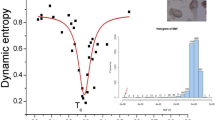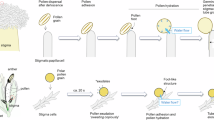Abstract
IT may, perhaps, not be generally known that pollen of flowers affords a convenient example of the circulation of protoplasm. If pollen from a fox-glove be placed in a solution of sugar at ordinary temperature in a drop-slide, the grains sprout within twenty minutes, and grow during several hours at an average rate of 1/10 millimetre per hour. The granules of protoplasm move in opposite streams side by side, turning at the lower end of the tube and inside the grain; the rate of motion may be calculated at I millimetre in one and a half to two minutes. The rapidity and duration of the streaming movement vary in different species; in the pollen of the fox-glove it seldom continues longer than five or six hours, but in that of the bee orchis it may be still observed on the third day, after the tubes have ceased to grow. Protoplasm which has been set free by the bursting of tubes or grains, continues to show signs of life for a longer period. The granular character of the protoplasm is less distinct in some species than in others, but with a sufficiently high power—1/8—a visible motion of the contents of pollen tubes appears to be common.
This is a preview of subscription content, access via your institution
Access options
Subscribe to this journal
Receive 51 print issues and online access
$199.00 per year
only $3.90 per issue
Buy this article
- Purchase on SpringerLink
- Instant access to full article PDF
Prices may be subject to local taxes which are calculated during checkout
Similar content being viewed by others
Rights and permissions
About this article
Cite this article
POTTER, H. Streaming Movements of the Protoplasm in Pollen of Flowers. Nature 56, 248 (1897). https://doi.org/10.1038/056248b0
Issue date:
DOI: https://doi.org/10.1038/056248b0



